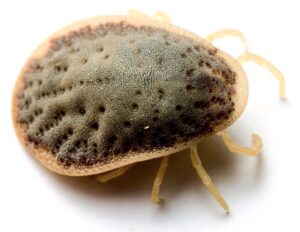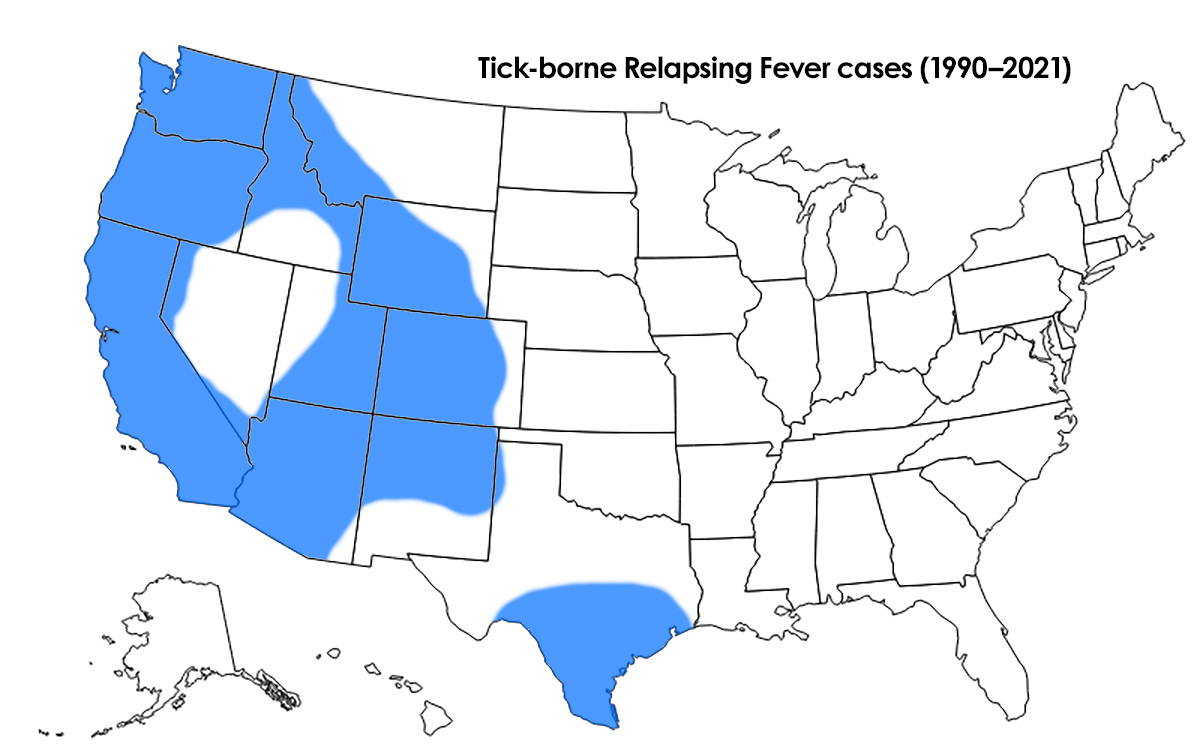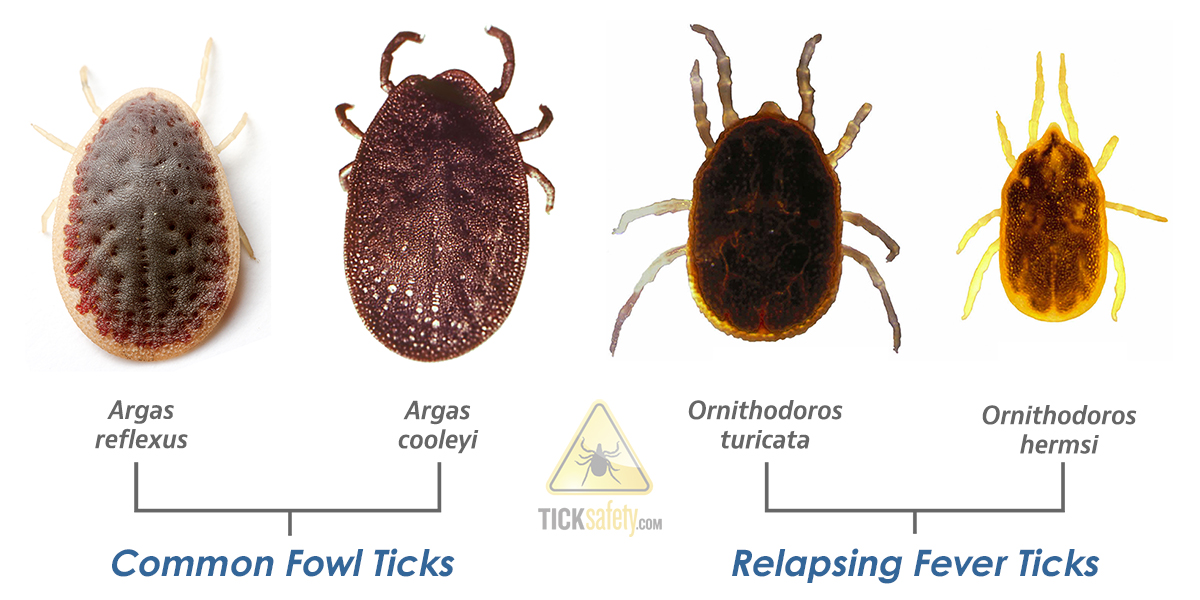Soft Bodied Ticks
Argasidae Family
 The family of ticks that makes up the Soft Bodied ticks (Argasidae), contains nearly 200 species worldwide, however in the United States, there are really only a handful of somewhat common species: the Pigeon tick (Argas reflexus) pictured right, the Swallow tick (Argas cooleyi), and Relapsing Fever tick (Omithodoros turicata).
The family of ticks that makes up the Soft Bodied ticks (Argasidae), contains nearly 200 species worldwide, however in the United States, there are really only a handful of somewhat common species: the Pigeon tick (Argas reflexus) pictured right, the Swallow tick (Argas cooleyi), and Relapsing Fever tick (Omithodoros turicata).
The first two soft bodied ticks, the Pigeon and Swallow ticks, are commonly known as “Common Fowl ticks” and are one of the most important poultry parasites in the southern United States. Fowl ticks are of concern because they will attack humans both in poultry houses and when they occasionally invade structures near poultry houses, and because they are vectors of avian spirochetosis in fowl.
Various species are found throughout the United States, with most being found more commonly in the southern states.
Relapsing Fever ticks (Omithodoros turicata) are oval shaped and flat and do not have any straight lines or evidence of a hard shell. For that reason, they appear to be almost fuzzy looking. Unless laying upside down, soft ticks do not have any visible mouthparts. As with other tick species, larvae have six legs while nymphs and adults have eight.
While Fowl ticks feed primarily on well, fowl (especially poultry), they have been known to occasionally bite humans as well. Luckily, there have not been any reported cases of tick-borne pathogens transmitted to humans from them. Relapsing Fever ticks on the other hand live within rodent burrows, feeding as needed on the rodent as it sleeps — and are a known vector of several pathogens including Tick-Borne Relapsing Fever, which is extremely similar in nature to Colorado Tick Fever.
Humans typically come into contact with soft ticks when they sleep in rodent-infested cabins. The ticks emerge at night and feed briefly while the person is sleeping. Much like the bites of other common ticks like the Blacklegged “Deer” tick, the bites from these soft ticks are also painless, and most people are unaware that they have been bitten.
Between meals; which tend to only last for at most a half hour or so, the ticks may return to the nesting materials in their host burrows as both nymph and adult stage soft bodied ticks tend to be only active at night. Larvae on the other hand have been shown to be extremely active at all times of the day or night.
Tick-Borne Relapsing Fever
Caused by a bacteria (either Borrelia hermsii, turicatae, or parkeri) and transmitted by the Relapsing Fever soft bodied tick, Ornithodoros (either hermsi, turicata, or parkeri), the disease is characterized by recurring episodes (3 days on 7 off) of high fever, can be up to 106.7°F during certain phases.
Each fever episode is followed by signs/symptoms which may include headache, muscle and joint aches, nausea, chills, arthralgia, vomiting, abdominal pain, dry cough, eye pain, confusion. The diagnosis is by microscopy and treatment may be with tetracycline, erythromycin, or other antibiotics.
Without antibiotic treatment, this process can repeat several times and may be detrimental to children, the elderly, and those with compromised immune systems.

In the United States, Relapsing Fever soft ticks occurs most commonly in 14 western states: Arizona, California, Colorado, Idaho, Kansas, Montana, Nevada, New Mexico, Oklahoma, Oregon, Texas, Utah, Washington, and Wyoming.

Relapsing Fever (Soft) Tick Behavior
As mentioned above, the Borrelia bacteria that cause TBRF are transmitted to humans through the bite of infected soft ticks of the genus Ornithodoros. Soft ticks differ in two important ways from the more familiar “hard ticks” (e.g., the dog tick and the deer tick).
First, the bite of soft ticks is brief, usually lasting less than half an hour. Second, soft ticks do not search for prey in tall grass or brush. Instead, they live within rodent burrows, feeding as needed on the rodent as it sleeps. These soft bodied ticks are usually only found in the Western United States; particularly Washington, Oregon, California, Arizona, Colorado, and parts of Texas.
Humans typically come into contact with soft ticks when they sleep in rodent-infested cabins. The ticks emerge at night and feed briefly while the person is sleeping. The bites are painless, and most people are unaware that they have been bitten. Between meals, the ticks may return to the nesting materials in their host burrows.
There are several Borrelia species that cause TBRF, and these are usually associated with specific species of ticks. For instance, B. hermsii is transmitted by O. hermsi ticks, B. parkeri by O. parkeri ticks, and B. turicatae by O. turicata ticks. Each tick species has a preferred habitat and preferred set of hosts:
- Ornithodoros hermsi tends to be found at higher altitudes (1500 to 8000 feet) where it is associated primarily with ground or tree squirrels and chipmunks.
- Ornithodoros parkeri occurs at lower altitudes, where they inhabit caves and the burrows of ground squirrels and prairie dogs, as well as those of burrowing owls.
- Ornithodoros turicata occurs in caves and ground squirrel or prairie dog burrows in the plains regions of the Southwest, feeding off these animals and occasionally burrowing owls or other burrow- or cave-dwelling animals.
Soft ticks can live up to 10 years; in certain parts of the Russia the same tick has been found to live almost 20 years. Individual ticks will take many blood meals during each stage of their life cycle, and some species can pass the infection along through their eggs to their offspring. The long life span of soft ticks means that once a cabin or homestead is infested, it may remain infested unless steps are taken to find and remove the rodent nest.



